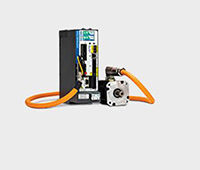Most companies in an industrial setting now have at least a base level understanding of the Industrial Internet of Things (IIoT). In fact, many have realized that this concept is an evolution of machine-to-machine (M2M), predictive analytics, smarter manufacturing and other ideologies for improving the industrialized world. With this baseline of understanding in place, the next step is to focus on the actions that will create the best practices inherent to the success of any IIoT initiative.
 These are the five most critical IIoT factors to be mindful of:
These are the five most critical IIoT factors to be mindful of:
Identifying things within the Internet. For “things” to be able to communicate with each other, they need to be uniquely identifiable within the Internet. Historically, this has been accomplished through the assignment of an Internet Protocol (IP) address. As the industry looks ahead to the trillions of things that will be connected, focus has been placed on adopting the IPv6 standard, which defines a 128-bit address capable of uniquely identifying 340 undecillion (340 x 1036) addressable items (compared with only 4 billion addressable items using today’s IPv4 standard). Though this range will more than cover the requirements of IIoT, it will be difficult—if not impossible—to manage this effectively on a global Internet scale. Typically managed by naming and number authorities with the aid of network administrators, this will be an impediment as more devices are added at an unprecedented rate.
Discovering things and the data they possess. Once a device can be identified, the next challenge lies in making the device and its associated data discoverable. Of course, a device should be able to restrict discovery of all or some of its data based on security or compliance requirements. Balancing ease of discovery with the rigid constraints of security will be fundamental to the success of IIoT, and must be achievable without deep knowledge and understanding of modern threats and cybersecurity.
Managing massive amounts of data. These trillions of devices will produce something much larger than trillions of data points (industry currently measures this in zettabytes or 1021 bytes), all of which will need to be collected, analyzed and possibly archived. Moving this amount of data over the Internet will consume new and unprecedented levels of bandwidth, which could result in the degradation of service as well as higher costs for Internet carriers, service providers and ultimately end users. Moreover, archiving this data for future analysis will require massive amounts of data storage and a new generation of scalable applications for honing in on points of interest in a timely manner.
Navigating connectivity outages. The things that make up IIoT, as well as the communication mediums that link them together, will not be available 100 percent of the time. While some downtime may be scheduled, there will be physical or environmental changes that result in intermittent to long-term outages. The severity of these outages will depend on where data loss is unacceptable or the criticality of variances in the data needs to be known in real time.
Integrating existing infrastructure into new IIoT strategies. Industrial devices have made data accessible over private networks for decades through the implementation of open or proprietary protocols. To achieve success in the areas of network optimization and third-party integration, complexities like security have largely been ignored. Given that the typical lifecycle for industrial things exceeds 20 years, there will be an expectation to integrate the existing into new IIoT strategies. Opening these private networks and the data they contain to the Internet will require detailed security assessments to minimize risk of exploitation.
As we look beyond the definition of the IIoT and begin to think about best practices for capitalizing on the latest evolution of machine connectivity, it’s important for us first to understand what challenges lie ahead. Though they are currently a hindrance, they will lead to future innovations, which will help us to extract even greater insights and value from the growing Internet of Things.
Kepware
www.kepware.com
Filed Under: MOTION CONTROL, MORE INDUSTRIES





Tell Us What You Think!